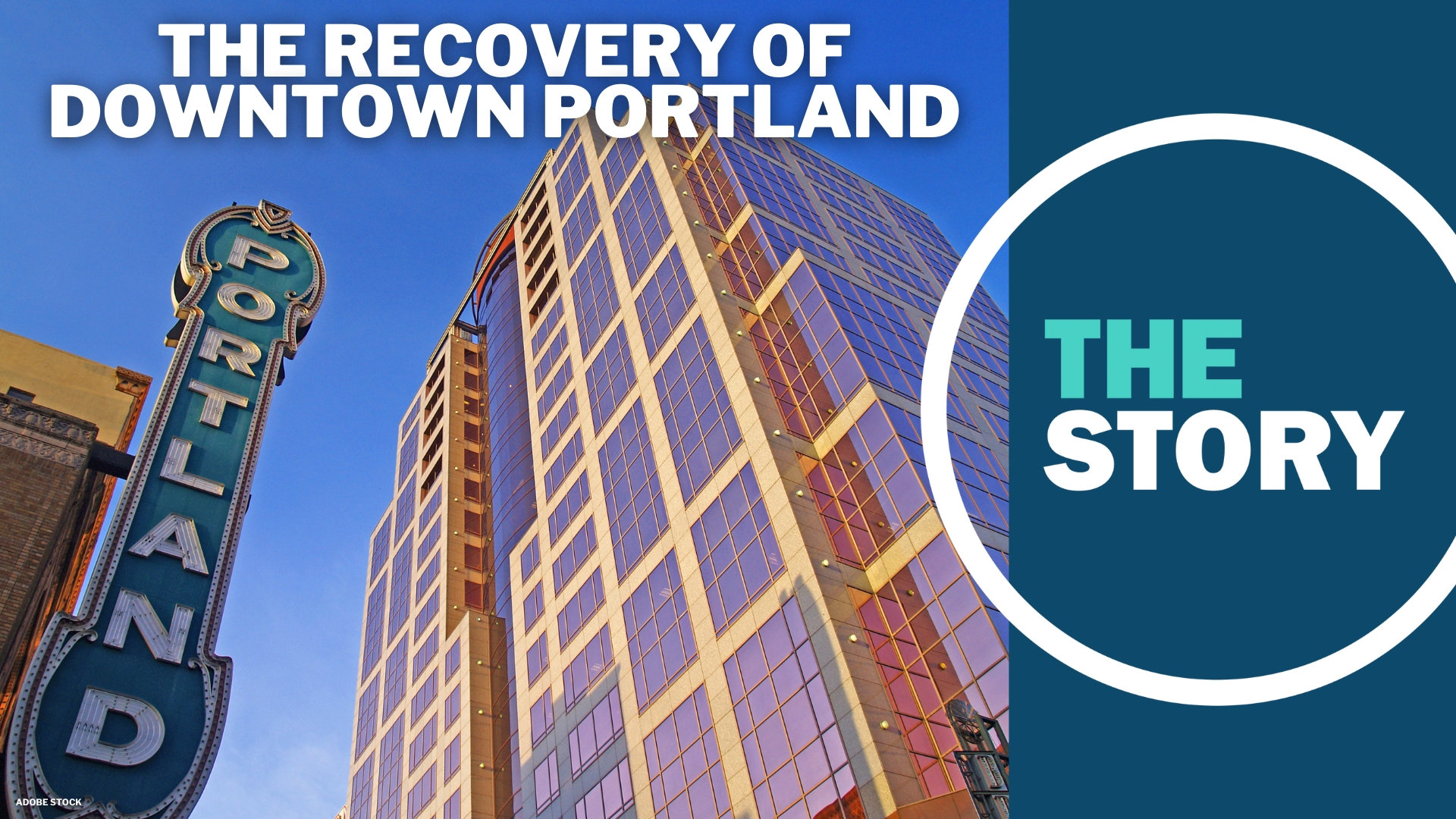PORTLAND, Ore. — By any metric, downtown Portland isn't the same place it was before the COVID-19 pandemic. Fewer office workers spend their days in the area, and many businesses have followed them out. At the same time, there have been a number of efforts to bring people back downtown, and there are some signs of improvement.
According to Downtown Portland Clean & Safe, a nonprofit formed by a coalition of businesses that operates the downtown "enhanced service district," foot traffic in the area hit a four-year high this summer. About 2.4 million people visited downtown Portland each month through June, July and August, according to their data.
This summer's foot traffic represents an increase of about 2% over 2023. While that overall uptick isn't huge, the group said that foot traffic is up about 9% on weekends, and that most people are visiting downtown on Friday and Saturday.
"The change in conditions downtown can be attributed to the decisions that were made over the last 12 to 18 months, specifically through the mayor's office, through emergency declarations that established the Street Services Coordination Center and created the City Shelter team, increased the number of available beds for our houseless community, increased the number of resources for outreach workers," said Steve Wytcherley, operations director for Clean & Safe. "So that collectively, with outreach workers and outreach organizations, there was a greater increase of people being able to access services. And through that, that's changed the conditions downtown."
According to the group, those efforts have reduced the things that were keeping people from coming downtown.
"We've seen a dramatic decrease in the number of tents downtown," Wytcherley continued. "So, over about 12 months ago, we were looking at over 200 (tents). Now it's about 50. And those are kind of closer to the social service organizations. And we have seen a massive decrease in the calls for open drug activity in the downtown core, even over the last six months since the governor's 90-day fentanyl crisis.
"We were responding to maybe over 200, 210 (drug use calls) per month. Last month, we responded to 39. That's a huge decrease because of the efforts of the mayor's office, the Street Services Coordination Center, the Behavioral Health Resource Center and also Portland Police Bureau, who is developing really collaborative relationships with all those entities."
Clean & Safe's report shows that hotels have had many more visitors this summer. Around 220,000 rooms were sold each month, although that remains below 2019 numbers.
On the other hand, office vacancies continue to climb. Roughly 26% of offices downtown are empty, and about 7.8% of retail spaces.
At this point, multiple studies have warned that office workers aren't coming back, and the way to revive downtown is through arts and entertainment events that draw in visitors. Wytcherley said Clean & Safe's data supports that conclusion, pointing to the statistics on weekend visitors who come downtown for fun and leisure.
"I believe the future of the revitalization of Portland is going to be based around events, art, culture, sports," he said. "We've seen some exciting developments with some future visions for what's going to happen in Portland in all of those aspects.
"We just had two huge concerts at the time, the stadium and the energy around those was amazing, and of course, the Timbers stadium, for example, if you come down for a big concert, you can actually park downtown and walk to the stadium and stop for dinner. And if some of the boutiques are open, you can shop as well. So, downtown's pretty small, and the more people we can bring downtown to come to an event, the more people will also then eat in restaurants and shop at the local stores — so the future of Portland's vibrancy, I believe, is going to be built around that."

